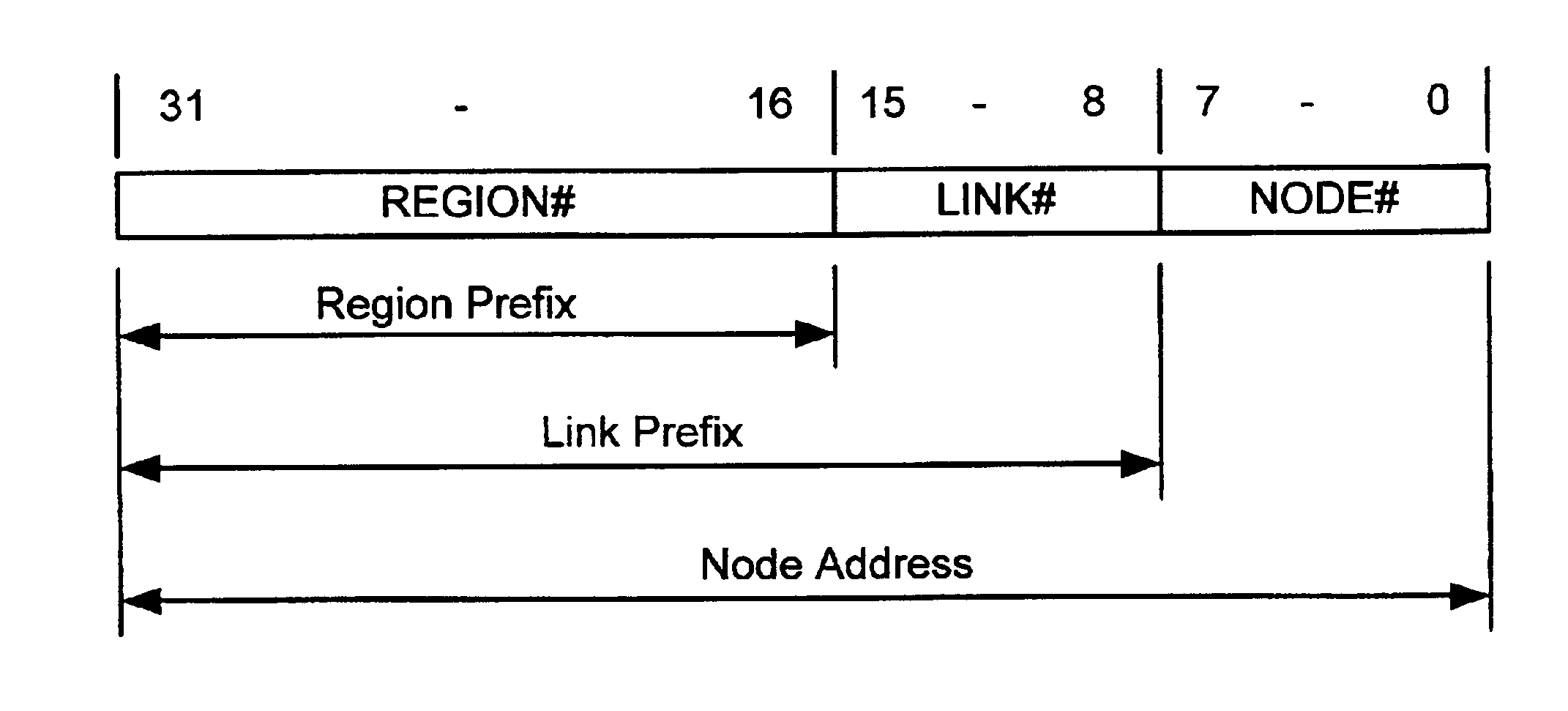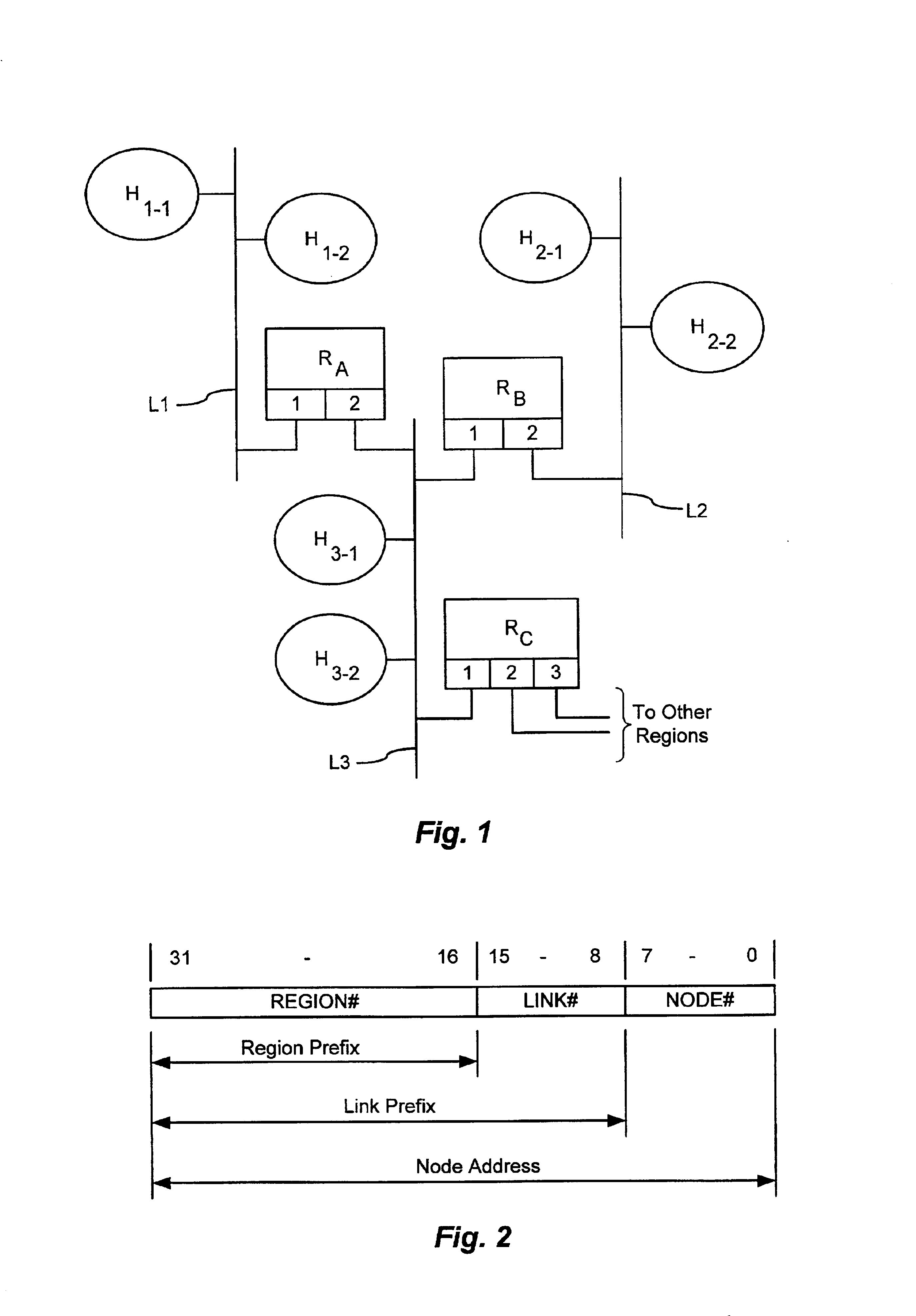Autoconfiguring IP routers
a router and auto-configuration technology, applied in the field of data communication networks, can solve the problems of time-consuming and error-prone configuration process, undesirable drawbacks of manual configuring of network addresses, etc., and achieve the effect of avoiding the drawbacks of a centralized approach
- Summary
- Abstract
- Description
- Claims
- Application Information
AI Technical Summary
Benefits of technology
Problems solved by technology
Method used
Image
Examples
Embodiment Construction
[0022]An Internet Protocol (IP) network is partitioned into regions, each of which includes host computers or end nodes, routers, and links. Each link interconnects a subset of the nodes of the region. The links are interconnected by the routers. A simplified example of such an IP network region is shown in FIG. 1, and is described below.
[0023]For ease of description, in the illustrated case it is assumed that each link in the region is an Ethernet Local Area Network (LAN), and that each node has a unique 48-bit “media access control” (MAC) address. Uniqueness of Ethernet MAC addresses is guaranteed by a known administrative address-assigning process, which employs a single address-assigning authority. As described below, the disclosed methods rely on the ability to uniquely identify routers in a network region. This criterion can be met conveniently by using the MAC addresses in an Ethernet-only environment. In other environments, other methods may be used to uniquely identify the ...
PUM
 Login to View More
Login to View More Abstract
Description
Claims
Application Information
 Login to View More
Login to View More - R&D
- Intellectual Property
- Life Sciences
- Materials
- Tech Scout
- Unparalleled Data Quality
- Higher Quality Content
- 60% Fewer Hallucinations
Browse by: Latest US Patents, China's latest patents, Technical Efficacy Thesaurus, Application Domain, Technology Topic, Popular Technical Reports.
© 2025 PatSnap. All rights reserved.Legal|Privacy policy|Modern Slavery Act Transparency Statement|Sitemap|About US| Contact US: help@patsnap.com


